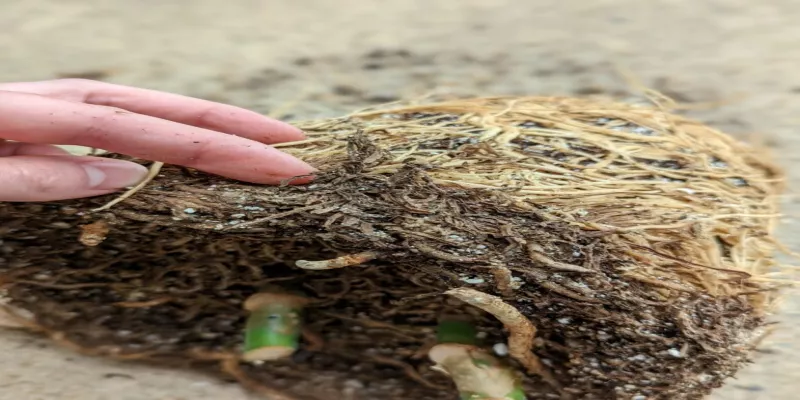How to Prevent Root Rot

Root rot is an issue that affects plant growth. It comes about when the roots are exposed to too much moisture making them vulnerable to disease. Rotten roots will appear to be darker brown and a bit translucent. They may also have an unpleasant smell to them and they may be squishy to the touch. In contrast, healthy roots will be white or light brown and will feel firm. The effects of root rot are pretty detrimental to your plant's health and it is often very difficult to reverse. Given this, read on for tips on how to prevent root rot.
How to Prevent Root Rot
If your plant is kept in soil, root rot is caused by soil that is too moist for too long. The soil in potted plants needs a chance to dry out to an extent, not completely, to remain a healthy environment for your plant's roots. But what about plants kept in water with no soil? Why don't they get root rot? They do. If the water is stagnant or not changed often enough, then plants kept in water will also get root rot.
Proper Pot
An important part of preventing root rot is choosing the right pot. There are a lot of factors that make a good pot. The most important factor is that the pot must have drainage holes for water to freely flow. If there is no drainage or inadequate drainage, that will quickly lead to over-saturation of the soil which is an invitation for disease. In addition, the pot needs to be the proper size. A pot should be no larger than two inches in diameter compared to the root ball. If a pot is a lot larger than the root ball, then the soil will take too long to dry out. Finally, you may want to consider what the pot is made of. For example, a terracotta pot is porous and the soil in a terracotta pot will dry out more quickly than soil in a plastic or glazed ceramic pot.
Proper Watering Technique
I wish there was an easy prescriptive way to water, but there isn't. There are too many factors. The best advice I can give you is to pay close attention to soil moisture. Some people use their finger to do that, but I prefer a tool. Soil moisture meters are very affordable and handy for monitoring soil moisture. I generally don't water my plants until they fall into the lower part of the moist zone or below it.
How Often to Water
There is no preset interval of time between waterings. It's something you have to learn. If you use a moisture meter, you can learn enough about how quickly your plant dries out that you can start to get on a watering schedule. I water most of my plants once a week, but there are a few plants that need mid-week watering because they like moister soil. That's another factor. Some plants prefer moist soil and some prefer drier soil, so you need to be informed about the individual needs of each of your plants. In addition, you still have to be careful about sticking to a schedule because what works in the growing season, will not work in the dormant season. Plants need more water when they're actively growing and less water when they aren't.
How Much Water to Provide
Monitoring soil moisture is the best way to learn about the amount of water to provide. General consensus in the plant forums is that it's not good to give your plants frequent small sips of water. This tactic can be really tempting too if you're very concerned about overwatering your plant. Instead, you want to water your plant deeply and then allow it the appropriate amount of time to dry. A good way to tell if you have watered deeply is to see if water drips into the drip tray under your plant pot after you have watered. You don't want water gushing out of the drainage holes, but some presence of water a few minutes after watering should be indication enough.
Proper Soil Mixture
Finally, proper soil mixture is important for preventing root rot. Whether you buy premixed soil or make your own, you need the right ratios to help the soil dry out appropriately between waterings. Organic materials like peat hold moisture, which is good. Soil needs to hold some moisture, but not too much. Soils can be "too rich" for lack of a better phrase. That moisture-holding material needs to be balanced out by something that helps encourage drainage. Bulky materials like perlite are often used to aid in drainage in many premade soil mixes. I often add extra perlite to premade potting soil mixes just to aid with drainage for most of my potted plants.
Proper Placement
The placement of your plant is lower in importance, but it can impact how quickly your soil dries out. A plant that is in full sun for many hours a day will likely dry out more quickly than a plant that gets more shade for example. Airflow can also be a factor. A plant near an air vent, window, or door may dry out more quickly than a plant kept in a humid bathroom. These are just things to be aware of.
Do you have any lingering questions about root rot? Ask in the Comments section.
Add new comment